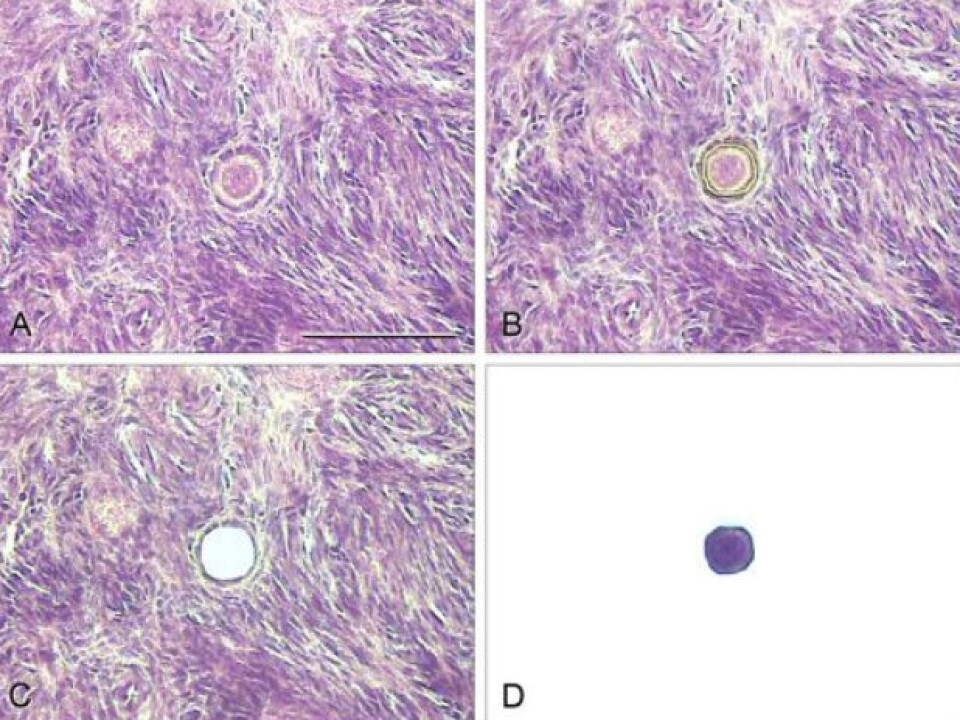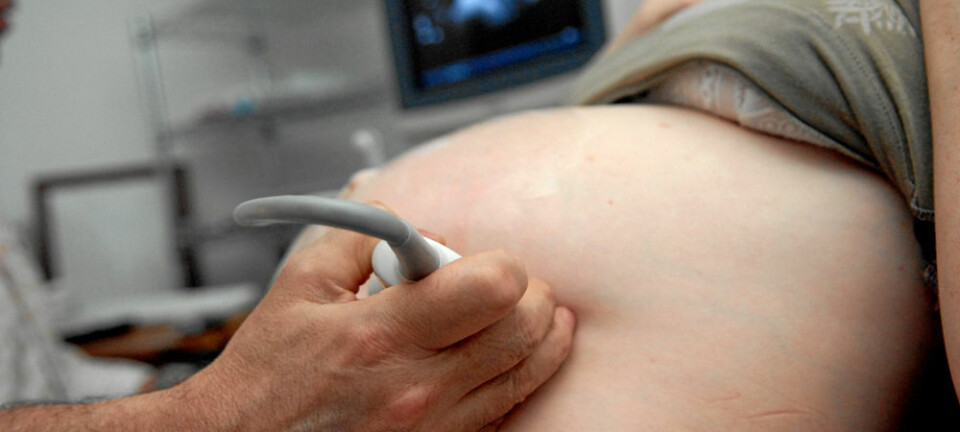
Defects found in infertile women’s eggs
For the first time ever researchers have developed a method for studying women’s immature eggs. The new findings could pave the way for customised fertility treatment.
Danish researchers have developed a new method for studying women’s eggs from the inside, long before they have matured in the menstrual cycle and are ready for fertilisation.
“Our new method can help shed light on female infertility,” says Karin Lykke-Hartmann, a lecturer at the Institute of Biomedicine at Aarhus University, who headed the new study.
“It will give us a chance to find the biological causes and will sharpen our judgement of which fertility treatment is the right one. This method is the first step towards customised fertility treatment.”
Laser cuts into the immature egg
The new method exploits the fact that egg maturation is genetically determined.

The active genes in the egg trigger the formation of certain proteins that control the various stages of maturation and guide them in the right direction.
The process involves translating the genes into RNA – tiny ‘recipes’ for the proteins.
The RNA is a decisive intermediary between the genes and the proteins, and if there are defects in the recipes, the eggs do not develop as they should.
“We can now look inside the egg and identify which forms of RNA they contain,” says Lykke-Hartmann.
Women are more sensitive to hormonal disturbances, since we’re born with a certain number of eggs. We cannot produce more eggs, so we have to make do with what we’ve got. Men, on the other hand, continue to produce new sperm, and that makes them less vulnerable.
Karin Lykke-Hartmann
“By studying the RNA in fertile women’s immature eggs, we have gained an insight into which proteins are required for an egg to develop optimally.”
RNA from hundreds of samples
Lykke-Hartmann and her colleagues used immature eggs from two young women whose eggs appeared to be healthy.
Their objective was to chart the RNA inside the eggs to form an impression of what the RNA looks like in an immature, healthy egg at a very early stage in its maturation process.
Extracting RNA from immature eggs is a highly demanding task. In order to extract sufficient quantities of the treasured DNA, the researchers had to cut about 600 eggs from ovarian tissue using a laser, which in itself is quite an achievement.
These incisions are performed with a microscopically small laser, fitted to a microscope, which is highly sensitive to even the tiniest vibrations. Repeating this procedure successfully hundreds of times proved a great test of the researchers’ patience.
They also had to be extremely careful when extracting the RNA from the cells. Not only were the eggs covered in paraffin wax, they were also fixed with paraformaldehyde. These substances could easily contaminate the RNA, rendering it useless.
”The individual methods we used aren’t entirely new. It’s the way we have combined them that forms this new groundbreaking method,” says the researcher.
Active genes in immature eggs
As a final step in the experiment, the researchers placed the extracted RNA on a microchip. This chip can recognise all kinds of RNA found in humans by comparing the RNA extracted from the eggs with its built-in RNA library.
”We passed our valuable RNA on to one of our partners, who then provided us with great amounts of data,” she says.
“After spending some time analysing this data, we have now managed to figure out which genes are active in the immature egg.”
Plans to chart all stages of egg maturation
The egg maturation process is highly complicated and consists of several stages. So far, the researchers have only gained insight into the very earliest stage.
But they have higher ambitions: their long-term plan is to scrutinise all stages while also including samples from the surrounding cells.
One of the questions they are hoping to answer is why only one egg manages to reach maturation in a menstrual cycle. In each cycle, more than 20 eggs start maturing, but only one of them matures fully.
The big question, then, is what is it about this particular egg that makes it successful while all the others perish?
“We don’t know the basic selection mechanisms involved, which is why we haven’t been able to boost the various processes. But we’re optimistic that our new method can help us with that.”
Gene therapy could be the key
The team is currently working on charting the final stage in the maturation process. They reckon that within a few years they will have mapped all the stages in the process for fertile women.
The plan is to repeat the procedure with infertile women and then compare the two categories.
”By comparing the processes for women in each of the two categories, we hope to identify the stage in the maturation process where things go wrong for infertile women,” says the researcher.
“This will also help us determine exactly which treatment can help infertile women.”
Women in fertility treatment are usually given large doses of hormones to stimulate egg maturation. By gaining insight into what happens in the eggs in the early stages, the researchers hope to find better alternatives, for instance by using gene therapy.
--------------------------------------------------
Read the article in Danish at videnskab.dk
Translated by: Dann Vinther





